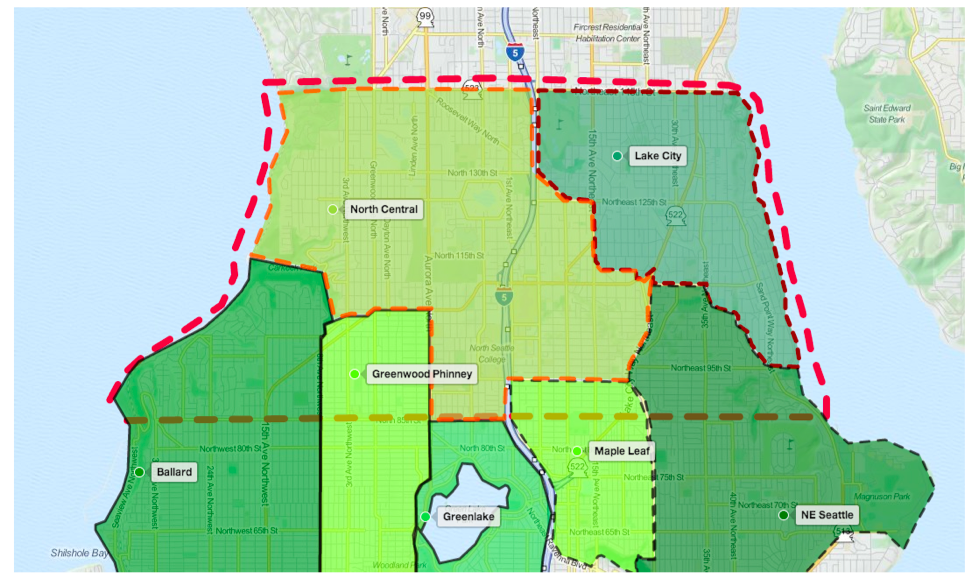Linking Seattle's Northern Lakes with Greenways
- Aug. 1, 2014
Wouldn't it be great to travel on safe streets around the beautiful small lakes of north Seattle? Wouldn't safe crossings of Aurora and I-5 make sense in the northern end of the city? These are some of the questions people in the northernmost end of Seattle are asking as they form a new greenways group. The new Northern Lakes Greenway is supported by Lake City Neighborhood Alliance, the Haller Lake Community Club, the Seattle Department of Transportation’s Office of Road School Safety, North Seattle College, the Licton Springs Community Council, Greenwood Phinney Greenways, Lake City Greenways, North Central Greenways, and Seattle Neighborhood Greenways.
The new Northern Lakes Greenway is supported by Lake City Neighborhood Alliance, the Haller Lake Community Club, the Seattle Department of Transportation’s Office of Road School Safety, North Seattle College, the Licton Springs Community Council, Greenwood Phinney Greenways, Lake City Greenways, North Central Greenways, and Seattle Neighborhood Greenways.
In North Seattle, pedestrian and bicycle infrastructure is deficient between N 85th St and North 145th St (the Seattle-‐Shoreline border). For example, most of this area is devoid of sidewalks and often has drainage issues. North Central and Lake City Greenway groups represent areas of high need and are completely contained within the deficient infrastructure area. They are composed of the micro-‐neighborhoods of Lake City, Olympic Hills, Pinehurst, Victory Heights, Licton Springs, Cedar Park, Haller Lake, Bitter Lake, Northgate, and Broadview.
North Seattle ranks high for prioritization of resources based on equity according to the Seattle Department of Transportation (SDOT). Furthermore this area of Seattle lacks safe street infrastructure. It is nearly devoid of improvements for people walking or biking along streets, and the lack of safe crossings of arterial streets creates dangerous barriers for getting across streets. Holman Road, Lake City Way, Aurora, Northgate Way, 85th, and I-5 all create barriers that divide our neighborhoods from each other, and our children from their parks and schools. This lack of infrastructure serves as a very real obstacle to residents who want to safely cultivate a healthy and active lifestyle. Many residents would like to be able to walk or bike to parks (and lakes!), schools, transit stops, businesses, and other destinations but cannot due to the unsafe or uncomfortable infrastructure.
This combination of a demographically diverse area and a pressing need for safe streets calls out for additional resources to be brought to bear to rectify this social injustice.
 The new Northern Lakes Greenway is supported by Lake City Neighborhood Alliance, the Haller Lake Community Club, the Seattle Department of Transportation’s Office of Road School Safety, North Seattle College, the Licton Springs Community Council, Greenwood Phinney Greenways, Lake City Greenways, North Central Greenways, and Seattle Neighborhood Greenways.
The new Northern Lakes Greenway is supported by Lake City Neighborhood Alliance, the Haller Lake Community Club, the Seattle Department of Transportation’s Office of Road School Safety, North Seattle College, the Licton Springs Community Council, Greenwood Phinney Greenways, Lake City Greenways, North Central Greenways, and Seattle Neighborhood Greenways.